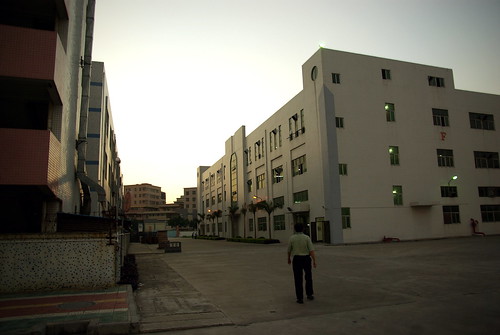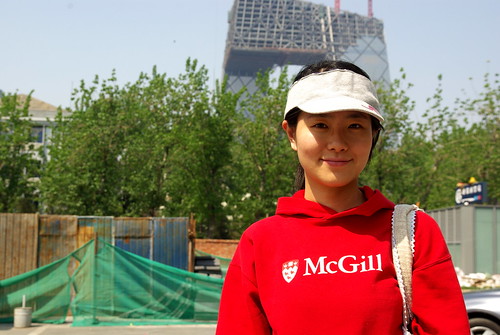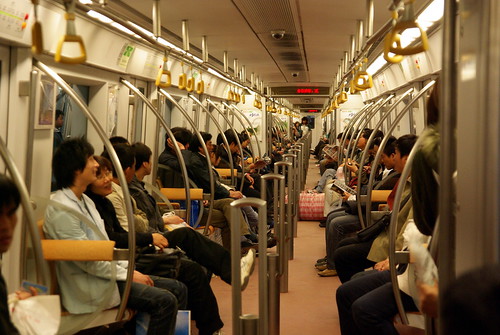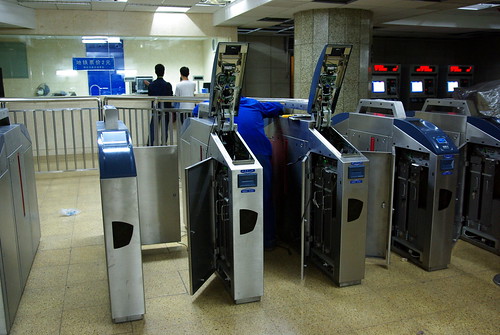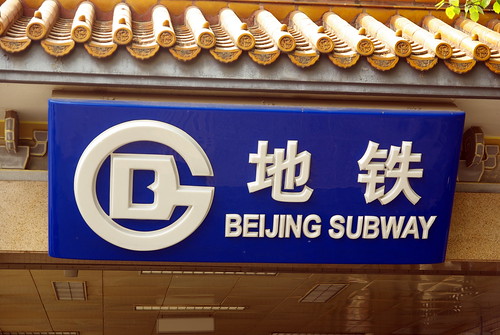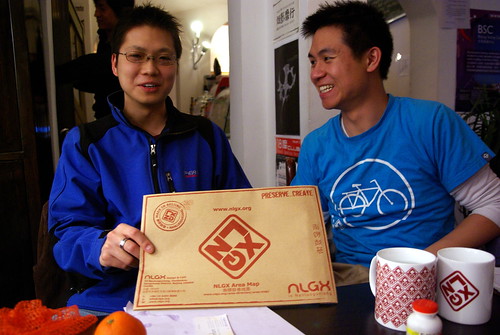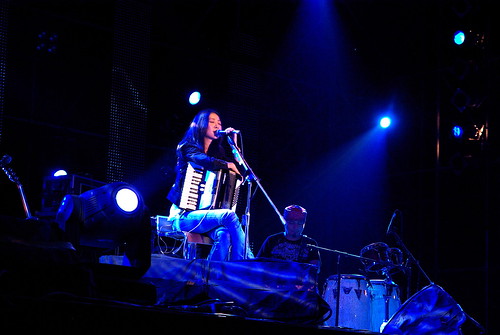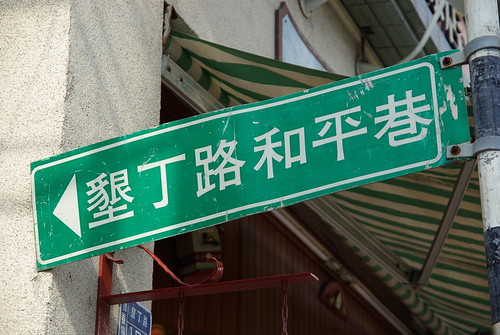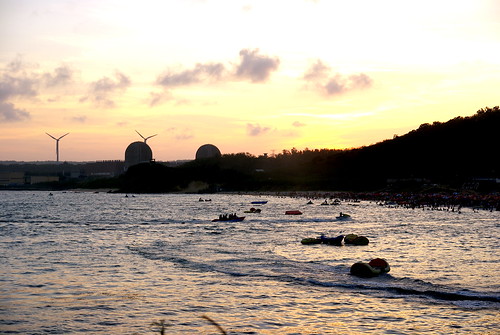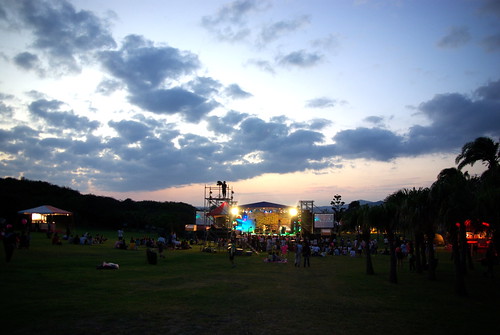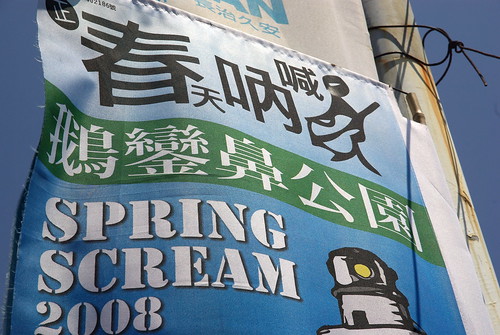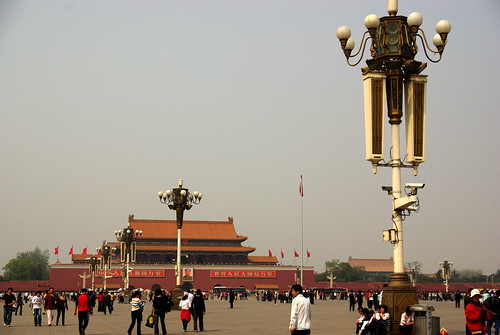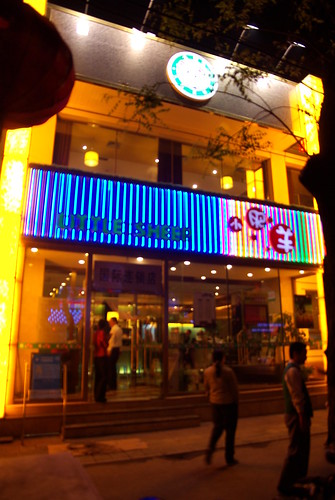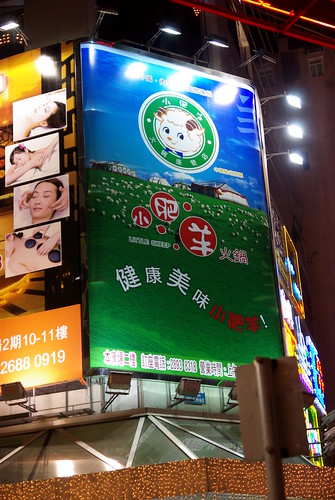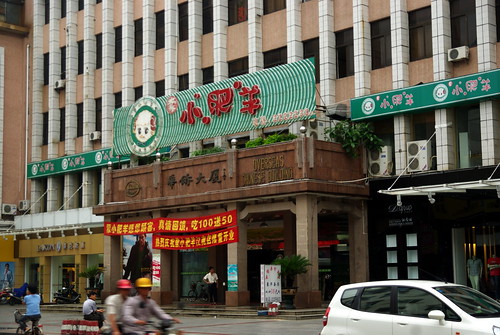Ça ne va pas très fort pour Mega Brands, compagnie de jouets et papeterie montréalaise fondée en 1967. En mai dernier, j’ai fait un voyage de deux jours du côté de la province du Guangdong en Chine, et en ai profité pour visiter l’usine de Mega Brands, pour laquelle travaille mon cousin. Je suis arrivé … Continue reading “L’usine Mega Brands à Shenzhen”
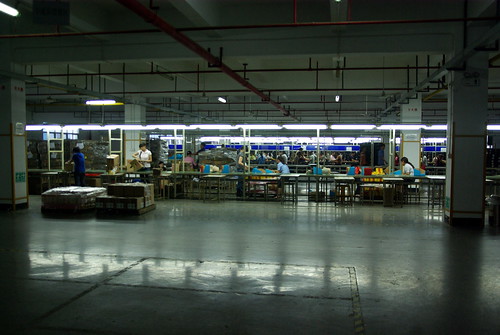
Ça ne va pas très fort pour Mega Brands, compagnie de jouets et papeterie montréalaise fondée en 1967. En mai dernier, j’ai fait un voyage de deux jours du côté de la province du Guangdong en Chine, et en ai profité pour visiter l’usine de Mega Brands, pour laquelle travaille mon cousin.
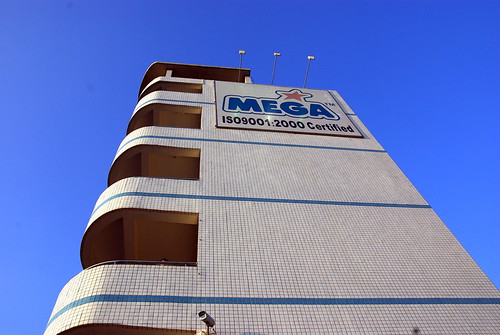
Je suis arrivé en début de soirée à Shajing, un district (plutôt une ville en elle-même) qui fait partie de la ville de Shenzhen, aussi une zone économique spéciale, qui ne l’est plus tellement dans la Chine d’aujourd’hui. Shajing est dans le nord-ouest de la municipalité de Shenzhen. Comme c’est souvent le cas dans les secteurs industriels, les boulevards sont larges, et le voisinage plutôt inintéressant.
Pour se rendre au travail, mon cousin prend une navette privée le matin, avec les autres expatriés de la compagnie.
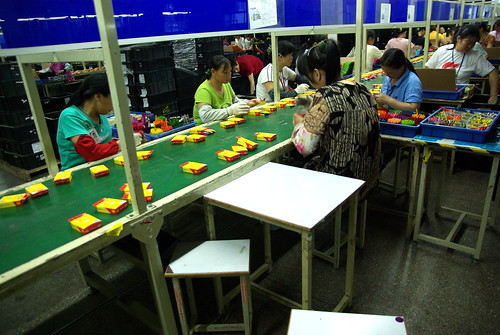
Les chaines ne fonctionnent pas toutes 24/7, et en effet, plusieurs d’entre-elles étaient déjà arrêtées pour la journée quand je suis arrivé. J’ai vu les lignes de fabrication de pâte à modeler : saviez-vous que c’était juste de la farine et du colorant ? Bon, et en plus, il y avait des crayons de cire, dont on voit les différentes composantes:
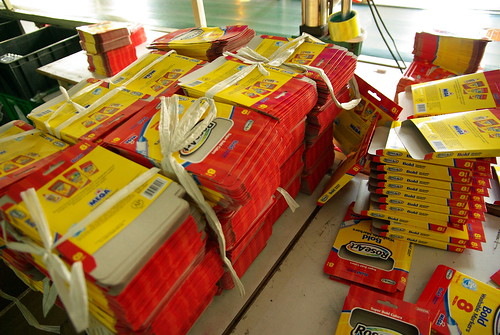
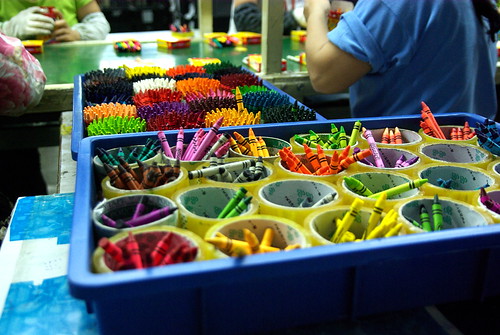
Pour quelqu’un qui n’avait jamais vu une usine opérée par une compagnie d’outre-mer, c’est bien sûr plutôt impressionnant. On allait d’un bâtiment à un autre, passant parfois via des passerelles, voyant en accéléré, parfois à reculons, les différentes étapes de la fabrication d’un produit.
La main-d’oeuvre n’est pas chère (même si elle le devient de plus en plus dans le sud de la Chine), alors le bottleneck n’est pas dans les tâches manuelles, comme l’empaquetage des crayons, par exemple, mais plutôt chez les machines, comme celles qui servent à couler la cire de ces crayons. Mon cousin travaille en général six jours / semaine, ce qui est idem aux travailleurs sur le terrain.
